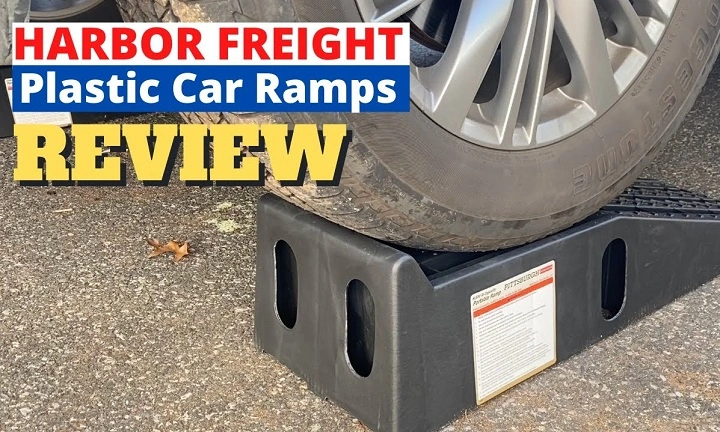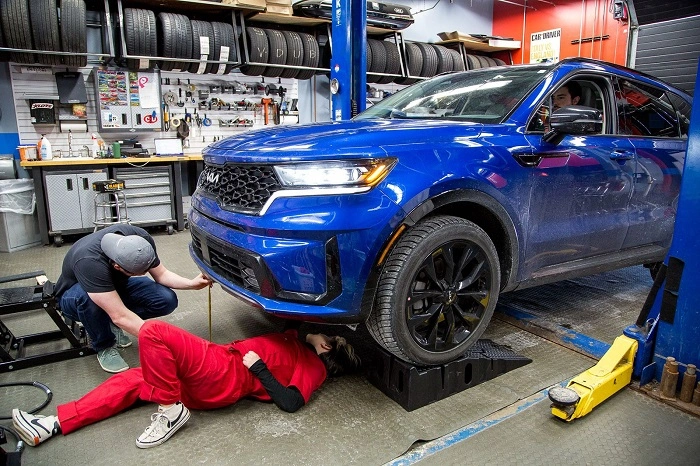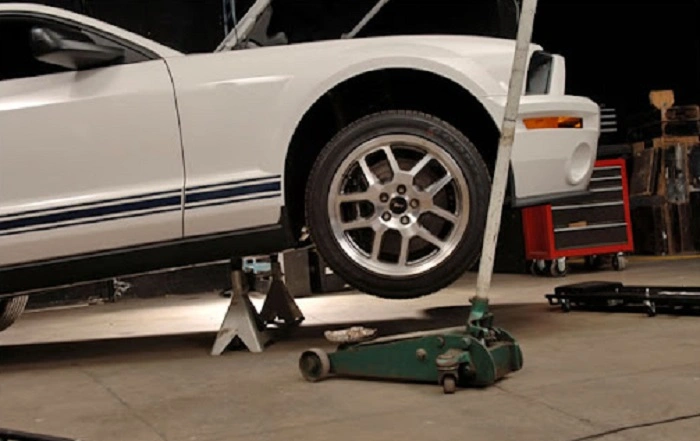Changing your car’s oil at home is affordable and saves time and gives you a sense of being in charge of the maintenance of your car. However, to do so, you have to get under the vehicle—and that is where car ramps for oil change come in.
Car ramps are one of the easiest and safest ways to raise your car. Compared to a jack and jack stands, which take a bit more to get set up and can be intimidating to the new owner, the ramps are stable and easy. With a quality set, you can drive your car up with ease, get to the oil pan and filter, and have a hassle-free oil change with no fuss.
In this 6000-word comprehensive guide, we will tell you everything that you need to know about car ramps for oil change: their types, advantages, how to use them properly, how they compare with other lifts, things to watch out for when purchasing them, best brands, how to maintain them properly, and most frequently asked questions. After reading this guide, you will be equipped with the proper information to choose and use car ramps for your do-it-yourself oil changes.
Why Car Ramps Are Ideal for Oil Changes
Safety
Car ramps provide a wide, stable surface. This prevents tipping, which happens occasionally with improperly positioned jacks.
Simplicity
Drive your car onto the ramps—no cranking or lifting required.
Accessibility
Ramps offer ample clearance to comfortably access the oil pan, filter, and drain plug.
Time-Saving
Installation is quick and easy compared to jacks and stands.
Cost-Effective
A quality set of ramps will have a lifetime span of several years and is usually less costly than hydraulic lifts or sets of jack stands.
Car Ramps Types
- Plastic/Composite Ramps
Light and portable.
Made from hardwearing reinforced plastics.
Sometimes created with grid patterns to facilitate weight distribution.
Examples: RhinoRamps, FloTool. - Metal Ramps
Made of steel or aluminum.
Heavy-duty but not lightweight. - Adjustable/Stackable Ramps
Sold in sections to stack to varying heights.
Suit low-clearance cars. - Hydraulic or Powered Ramps
Rare but worth it for pro garages.
Soft hydraulics lifting.
More expensive and not DIY-friendly.
There are pros and cons to each depending on your vehicle and finances.
Also Read: Peddle Car Buying
Most Important Features to Look for When Purchasing Car Ramps
- Weight Capacity – Purchase ramps with enough capacity to lift gross weight of your vehicle.
- Ramp Angle – Sport cars or low-clearance vehicles require low-profile ramps.
- Width – It should fit your tire width comfortably.
- Material – Plastic is lightweight; metal is durable.
- Grip Surface – Look for anti-slip designs to attain tire non-slipping.
- Storage – Stackable ramps give you space saving in your garage.
- Portability – Be careful with weight if you will be moving ramps frequently.
Safety of Using Car Ramps
Preparation
- Park on solid flat ground.
- Clean ramps and make them free of debris.
- Check with your car for weight limit.
Onto Ramps
- Align your tires with the ramps.
- Gradually and slowly move until you are at the top.
- There are ramps with a “stopper” at the top—wait until you sense it.
Securing the Automobile
- Set the car in park (automatic) or first gear (manual).
- Use the parking brake.
- Place wheel chocks behind the back wheels.
Getting Under the Automobile
- Double check that the automobile is stable before crawling underneath.
- Have equipment handy to be effective.
Driving Off Ramps
- Back slowly and gently.
- Clean when leaving.
Oil Change with Car Ramps: Step-by-Step
Equipment Needed
- Car ramps
- Oil drain pan
- Socket wrench
- Oil filter wrench
- Funnel
- New oil and filter
- Gloves and rags
Steps
- Drive onto ramps and park vehicle.
- Position oil drain pan under the oil plug.
- Remove oil drain plug using socket wrench.
- Allow old oil to drain completely.
- Remove and replace new oil filter.
- Replace drain plug securely.
- Fill with new oil using a funnel.
- Allow the engine to run for several minutes, then check for leaks.
- Check oil level with dipstick and refill as needed.
Ramps allow the draining process to be simpler to accomplish due to the slant of the incline, so more oil drains from the pan.
Car Ramps vs. Jacks and Jack Stands
| Feature | Car Ramps | Jack & Stands | Hydraulic Lift |
| Safety | Very stable | Safe if done properly | Extremely safe |
| Ease of Use | Easiest to use | Requires installation | Easiest, but costly |
| Cost | Affordable ($40–$80) | Moderate ($70–$150) | Expensive ($1,000+) |
| Portability | Lightweight, compact | Moderate | Heavy, fixed setup |
| Best For | Oil changes, quick jobs | Tire rotations, major repairs | Professional garagesF |
Ramps are ideal for oil change jobs, and wheel or brake work is best with a jack.
Common Mistakes to Avoid
- Installing ramps on soft or uneven ground.
- Overloading weight.
- Speeding up to ramps.
- Forgetting use of wheel chocks.
- Inching under the car without ensuring stability.
Car Ramp Maintenance
- Clean ramps regularly to avoid oil and grime accumulation.
- Inspect for plastic cracks or metal rust.
- Keep indoors away from direct sun or wetness.
- Replace ramps immediately structural damage appears.
Top Car Ramp Brands
- RhinoRamps
Lightweight composite plastic.
Inexpensive and DIYer’s choice. - FloTool
Similar to RhinoRamps, excellent for heavy use. - Race Ramps
High-end low-profile sports car ramps.
Light foam core with durable finish. - Black Widow
Heavy-duty metal truck and SUV ramps.
There are ramps from every brand for all types of vehicles, from small cars to heavy trucks.
Best Oil Change Ramps Examples
- RhinoRamps 16,000 lbs – Low cost, heavy duty, and portable.
- Race Ramps 67″ Low Profile – Perfect for sport cars because of low ground clearance.
- Black Widow 20,000 lbs Steel Ramps – Perfect for large trucks and SUVs.
- FloTool 11909ABMI Ramps – Cheap for small cars.
Environmental Factors
Ramps encourage do-it-yourself oil changes, but responsibly dispose of oil at all times.
Use oil recycling centers or car repair shops that will take used oil.
Keep ramps free of dripped oil to prevent slipping.
Advanced Uses of Car Ramps Beyond Oil Changes
- Transmission fluid change.
- Exhaust system check-ups.
- Ski plate installation.
- Undercarriage rust check-up.
Car ramps are convenient tools for most DIY car repairs.
Future of Car Ramps
- Smart Ramps: Alignment check built-in sensors and weight sensing.
- Green Materials: Made of recycled materials.
- Modular Designs: Adjustable in height for multiple tasks.
Innovation will continue to make ramps safer and more user-friendly.
Frequently Asked Questions (FAQs) About Car Ramps for Oil Change
Will car ramps work for any vehicle?
No, always cite weight ratings and clearance. Heavy-duty ramps are needed for trucks and SUVs.
Are plastic car ramps safe?
Yes, well-engineered plastic ramps are safety-tested and durable.
Will ramps work for tire changing?
Not the best—use jacks to lift one wheel off the ground.
How long do car ramps last?
With maintenance, 10+ years for good ramps.
Are ramps okay for hybrid and electric vehicles?
Yes, but the ramps must be of low clearance suitable for the car.
Oil change car ramps are the safest, most convenient, and most cost-effective DIY automobile maintenance equipment within everyone’s reach. They provide you with stability, access, and peace of mind and enable you to change oil in minutes efficiently without the hassle of stands and jacks.
Whether you own a compact sedan, sports car, or large truck, there’s a pair of ramps out there for you. Treat them well and use them effectively, and they’ll last you years and years and leave your car in tip-top shape.
The next time you’re thinking about changing your oil at home yourself, remember this: a quality set of car ramps isn’t an extra, it’s an investment in safety, convenience, and self-assurance.




